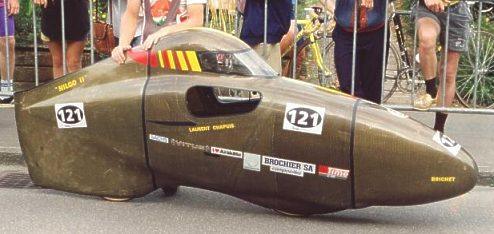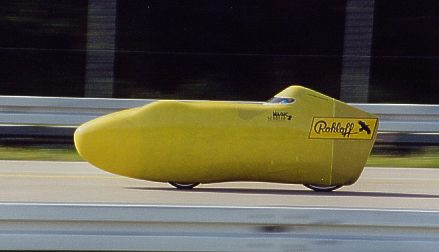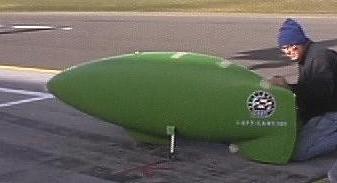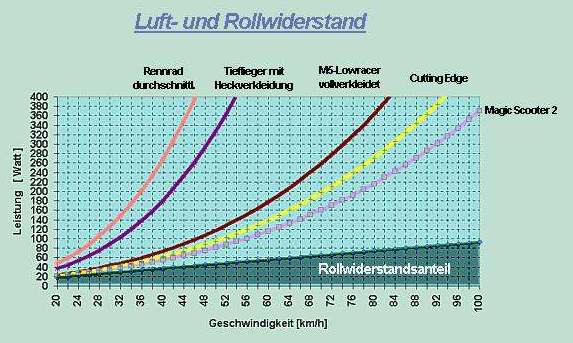

| cd*A | cd values | frontal area A | |
|---|---|---|---|
| upright race bike, dep. on driver and equipment | 0,23 - 0,40 | 0,5 - 0,75 | 0,4 - 0,55 |
| unfaired recumbent, low | 0,24 | 0,74 | 0,32 |
| low recumbent with tail fairing | 0,187 | 0,54 | 0,35 |
| M5-Lowracer, fully faired | 0,047 | 0,16 | 0,29 |
| Cutting Edge | 0,032 | 0,125 | 0,26 |
| Pinguin ( Frank Lienhard ) | 0,0245 | 0,098 | 0,25 |
| Varna Diablo 2002 | 0,0185 | 0,097 | 0,191 |
| Magic Scooter 2 | 0,0225 | 0,067 | 0,335 |


